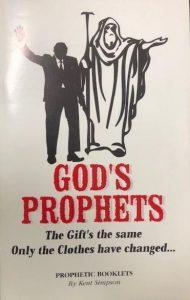Wine and Worship
In our last article, we discussed God’s seven holy feasts and gave a brief explanation of their significance, how they foretold of Christ’s arrival, and how He fulfilled each of them. Of these seven feasts, men were required to appear for three every year: the Festival of Unleavened Bread (Passover), Festival of Weeks (Pentecost), and Festival of Tabernacles (Sukkot). They all had customs concerning wine, with each symbolizing a different aspect of Christ’s final ministering, during His time on earth.
The Feast of Tabernacles (Sukkot) was a fall harvest festival that required that the Israelite men present a tithe offering of everything their fields had produced. In remembrance of their forefather’s time living in tents, they were to stay in temporary structures for seven days (ref. Deuteronomy 14:22; 16:13-15). On the last day of this celebration, the High Priest would draw water from the spring under the Jerusalem Mount, which was used to previously anoint King David. The water from this spring was extremely limited and precious and would be mixed with wine during the public sacrifices during the festivities. Jesus declaring that He was the source of Living Water (ref. John 7:37-39) shocked the audience, who understood that the sacrificial outpouring of living water and wine, symbolizing blood, was a sign of the coming Christ (Jeremiah 17:13; Zechariah 14:8-9; John 7:41) before God’s reign on earth. This was fulfilled when one of the soldiers pierced His side with a spear, and blood and water poured out (ref. John 19:34).
Passover had originally required that the blood of the sacrificial lamb to be displayed on the doorposts of each Israelite family’s home, but, because every male was required to attend it in Jerusalem, the lamb’s blood was instead poured out into a silver basin and splashed on the altar of sacrifice. The Kiddush, literally translated “sanctification” was a blessing recited over wine or grape juice on the Sabbath and Jewish holidays. Often, a silver cup, representing sanctification/salvation, was used. Christ uses this symbolism when He blessed the wine during the Passover dinner, often described as the Last Supper (ref. Matthew 26:26-29; Mark 12:23-25; Luke 22:17-18).
The Passover celebration had multiple cups of wine to be drunk throughout the meal, but Paul recognized the cup drunk in remembrance of Christ was the “Cup of Blessing, which we bless, [during] the communion of the Blood of Christ” (ref. 1 Corinthians 10:16).
During the previous year’s Passover, Jesus fed the crowd of five thousand with five small barley loaves and two small fish. When the crowd tracked Him down, He confronted them with the fact that He was the Bread of Life and that only by “eating the flesh of the Son of man and drinking His Blood” could they have Eternal Life. Even though the parallels between the Passover celebration’s bread and wine were still fresh on their minds, they still failed to understand the symbolism of what Christ said and many disciples abandoned Him (ref. John 6).
After Christ’s Resurrection, when the Feast of Weeks (Pentecost) was being celebrated, Jesus’ followers experienced a violent heavenly wind in the house, before tongues of fire fell upon them and they became filled with the Holy Spirit and began to speak in other languages. Because all Jewish men were required to attend Pentecost every year, people from all over the known world were present and when they heard their native foreign languages being spoken, they became confused, since the group consisted of mostly Galileans. Some of those participating in Pentecost instead taunted them, saying that the disciples had had too much wine. Apostle Peter challenges this, saying, in a booming voice, while addressing the crowd, “Fellow Jews and all of you who live in Jerusalem, let me explain this to you; listen carefully to what I say. These people are not drunk, as you accuse. It’s only nine in the morning! (ref. Acts 2:1-15). Though wine was drunk liberally during this festival, it would not have been consumed during the breakfast meal.
Peter recognizes that this event was a prophetic fulfillment of Joel 2:28-32, which stated that in the Last Days, God said He would pour out His Spirit on All People, many would be filled with prophetic insight, and all who called on the name of the Lord would be saved. The Greek word used to express the pouring out of the Spirit “ekcheō” is extremely similar to the Hebrew word “shaphak” which also referenced the pouring out of the Spirit. Both were typically used in association with something that had been pierced, crushed, or otherwise broken before its contents are spilled out, such as the crushing of grapes for wine and the slaughtering of an animal for a blood sacrifice. While the jeering spectators thought the disciples were filled with the over pouring of wine in celebration of Pentecost and the spring harvest, Jesus’ followers were the first to be filled with the intoxicating Holy Spirit, which would now flow upon all who called on Christ’s name.
These three celebrations were mentioned several times in the Old Testament (Exodus 34:22; Deuteronomy 16:16; 2 Chronicles 8:13) as being mandatory, because they were profoundly significant in recognizing Christ’s arrival. Despite celebrating these feasts annually for hundreds of years, many Jews in Jesus’ time failed to recognize Him in the multiple instances of wine symbolism. Because Christ was the grape that was crushed and the Lamb that was slain, we not only are redeemed of all unrighteousness, have access to eternal life, but also have the overflowing Holy Spirit as our Helper during this New Age.
Prepared by, Kent Simpson, Apostolic Prophet & Eric Sepulveda, PMT Administrator
For more prophetic media groups click here



